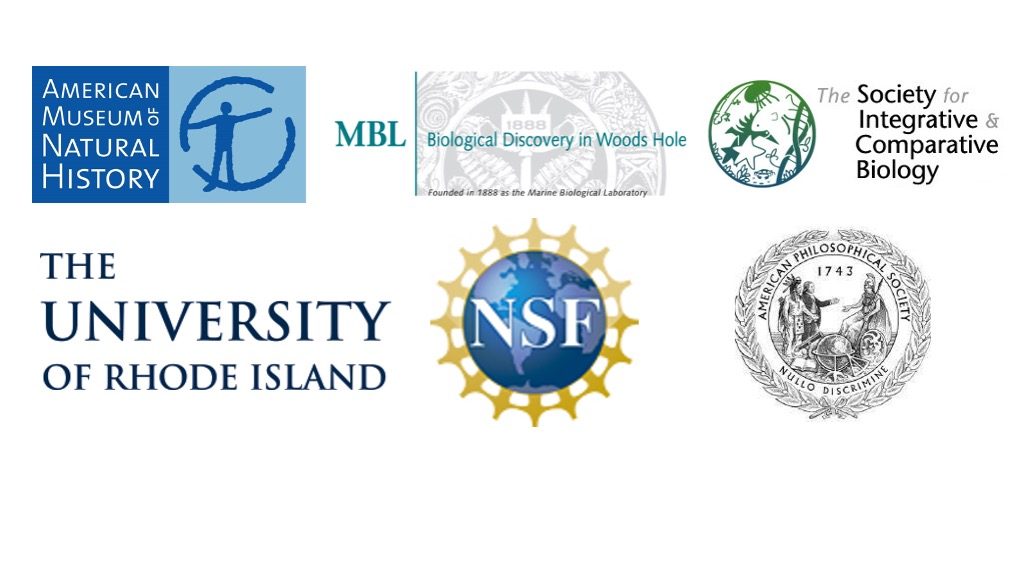“What underlies great science is what underlies great art, whether it is visual or written, and that is the ability to distinguish patterns out of chaos” — Diana Gabaldon, author of Outlander
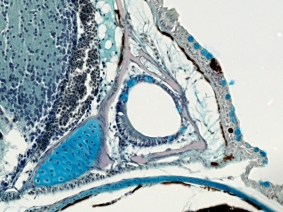
We study the structural and functional development and evolution of fish sensory systems, especially the mechanosensory lateral line system, a primitive vertebrate sensory system found in all 34,000+ fishes (and larval and aquatic adult amphibians). The lateral line system detects water flows, which facilitates critical prey detection, predator avoidance, communication, rheotaxis, and navigation. Furthermore, unlike the nose, eyes and ears, which are bilateral sense organs found on the head, the lateral line system is composed of many small sense organs (neuromasts) located in arrays on the skin and in tubular canals on the head, trunk and tail. In bony fishes, canal neuromasts are found within a conserved subset of skull bones on the head and in the trunk canal in the lateral line scales on the body. Thus, the lateral line system has a dual identity – as a major component of the skull of bony fishes and as an essential sensory system that mediates critical behaviors. An understanding of the role of the lateral line system in behavior will also shed light on how fishes may overcome challenges in aquatic environments presented by global change.
Our recent work has been on the developmental and evolutionary sensory biology and ecology of freshwater tropical and temperate fishes, coral reef fishes, cichlid fishes, and deep sea fishes (see Research Page). Each taxon has interesting or unique morphological, developmental, and/or behavioral attributes that have allowed us to ask fundamental questions about sensory evolution, development, functional morphology, and behavior.
We use multiple methods including vital fluorescent imaging, histology, SEM, CT/µCT, and fate mapping to gain a comprehensive understanding of patterns of lateral line development and adult morphology. We were also the first to use CT and µCT imaging for the study of the comparative morphology of the swim bladder in live, anesthetized fishes and for visualization of the cranial lateral line canals. We have used DPIV (for analysis of hydrodynamic stimuli), video analysis, and classical fish training (conditioned responses to artificial hydrodynamic stimuli) to study the sensory basis for feeding behavior.
Recent Research Highlights
- Webb (2023) – “Structural and Functional Evolution of the Mechanosensory Lateral Line System of Fishes” – An invited research career retrospective in Journal of the Acoustical Society of America (part of a special issue on Fish Bioacoustics).
- Hu et al. (2022) Ear development in select coral reef fishes: Clues for the role of hearing in larval orientation behavior? Ichthyology and Herpetology. 110: 759-775. Awarded 2022 Best Paper in Ichthyology in Ichthyology and Herpetology (Young Investigator)
- Webb et al (2021) – members of the Webb and Maruska [LSU] labs published the first synthetic treatment of the anatomy, physiology and behavioral roles of the lateral line system of cichlid fishes (the most speciose family of freshwater fishes). In: Abate ME & Noakes DLG (eds.). The Behavior, Ecology and Evolution of Cichlid Fishes: A Contemporary Modern Synthesis. Springer Academic, pp. 401-442.
- Majoris et al. (2021) – members of the Buston Lab (Boston U.), Webb Lab at URI and Paris Lab (U. Miami) published the first integrated study of ontogeny of multiple sensory systems and orientation behavior throughout the larval phase of any coral reef fish (a goby; Elacatinus lori). Open Access, in Scientific Reports.
- Nickles et al. (2020) Organization and ontogeny of a complex lateral line system in a goby (Elacatinus lori), with a consideration of function and ecology. Copeia 108: 863–885, provided the first detailed ontogeny of the lateral line system in any goby (the most speciose family of marine fishes and of coral reef fishes) revealing some of the “rules” underlying the organization of superficial neuromast proliferations in gobies. Awarded Best Paper in Ichthyology for 2020 in Copeia.
- Hu et al. (2018) “Potential roles of olfaction and taste in the orientation behavior of coral reef fish larvae: Insights from morphology”. Fish Biol. – Special Issue on Sensory Ecology of Fishes. 95: 311–323. – analyzed the ontogeny of the nose and taste buds in pelagic larvae of several coral reef fishes (damselfishes, goby, cardinal fish) and used these data to suggest that taste, not (just?) olfaction, mediates the chemosensory cues that larvae may use in orienting towards coral reef settlement sites
- Marranzino and Webb (2018) revealed the presence of superficial neuromast proliferations in stomiiform fishes for the first time, thus suggesting the importance of flow sensing in these ubiquitous and ecologically critical deep-sea fishes.
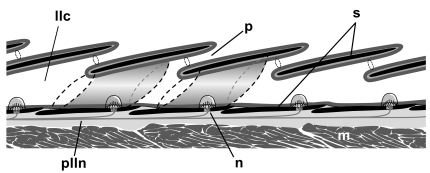
- Webb and Ramsay (2017) analyzed the 3-D configuration of the lateral line canal within the lateral line scales of teleost fishes in order to clarify incorrect figures published in all textbooks. Awarded Best Paper in Ichthyology for 2017 in Copeia.
Recent Webb Lab News
- Dr. Webb was awarded the 2024 URI Foundation Award for Teaching Excellence
- PhD student Aubree Jones successfully defended her dissertation “Form and
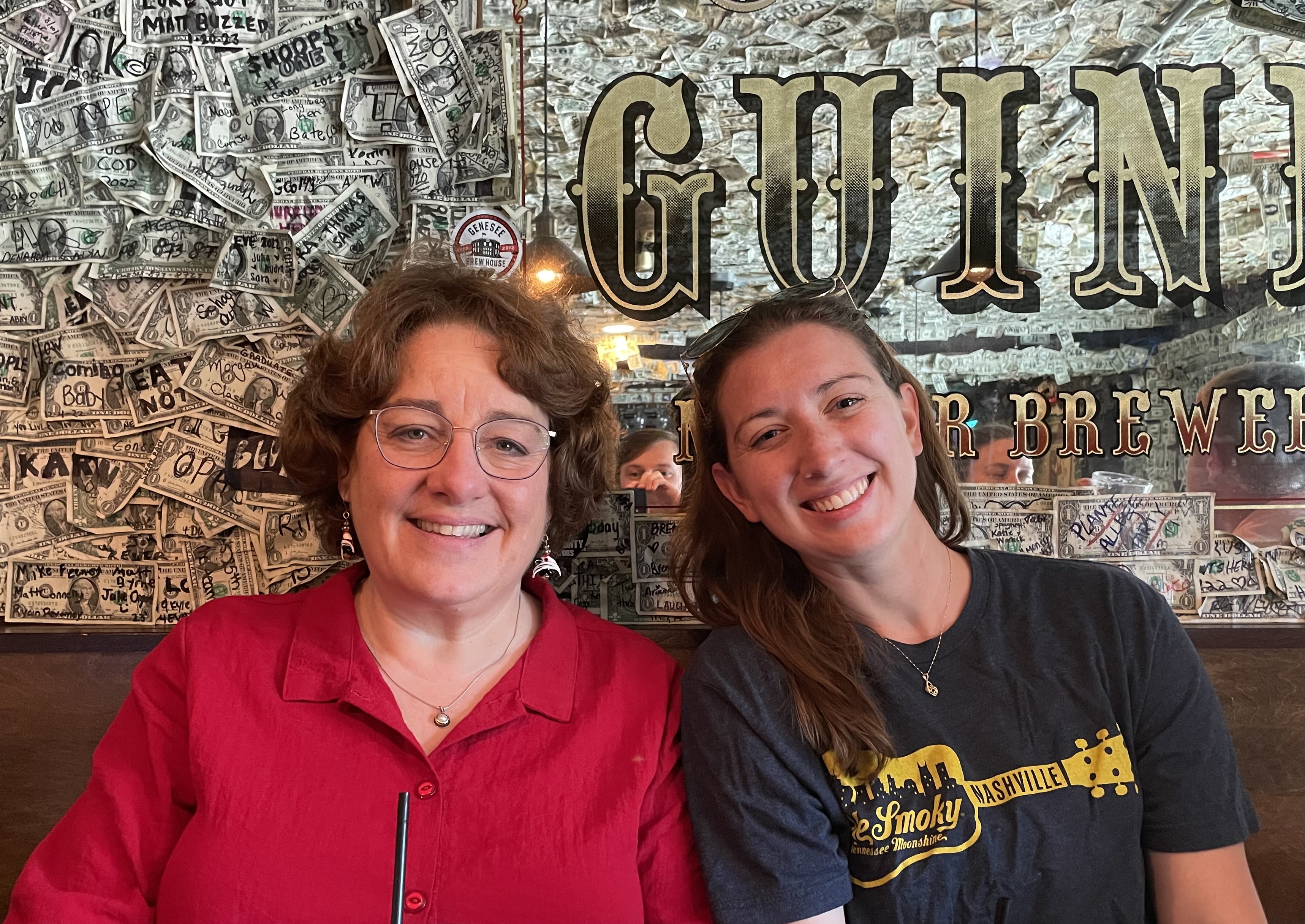 Function of the Lateral Line System in Three North American Fishes: Development, Evolutionary Insights, and Impacts of Climate Change”. (photo to right)
Function of the Lateral Line System in Three North American Fishes: Development, Evolutionary Insights, and Impacts of Climate Change”. (photo to right) - Dr. Webb was a finalist for the 2023 URI Foundation Award for Excellence in Teaching
- PhD student Aubree Jones won the 2023 Department of Biological Sciences TA Award for Excellence in Teaching.
- Former Webb Lab graduate students Julia Johnstone (MS URI, PhD U. Maine) and Ashley Marranzino (MS URI, now working for the NOAA Office of Exploration) were very happy to meet at
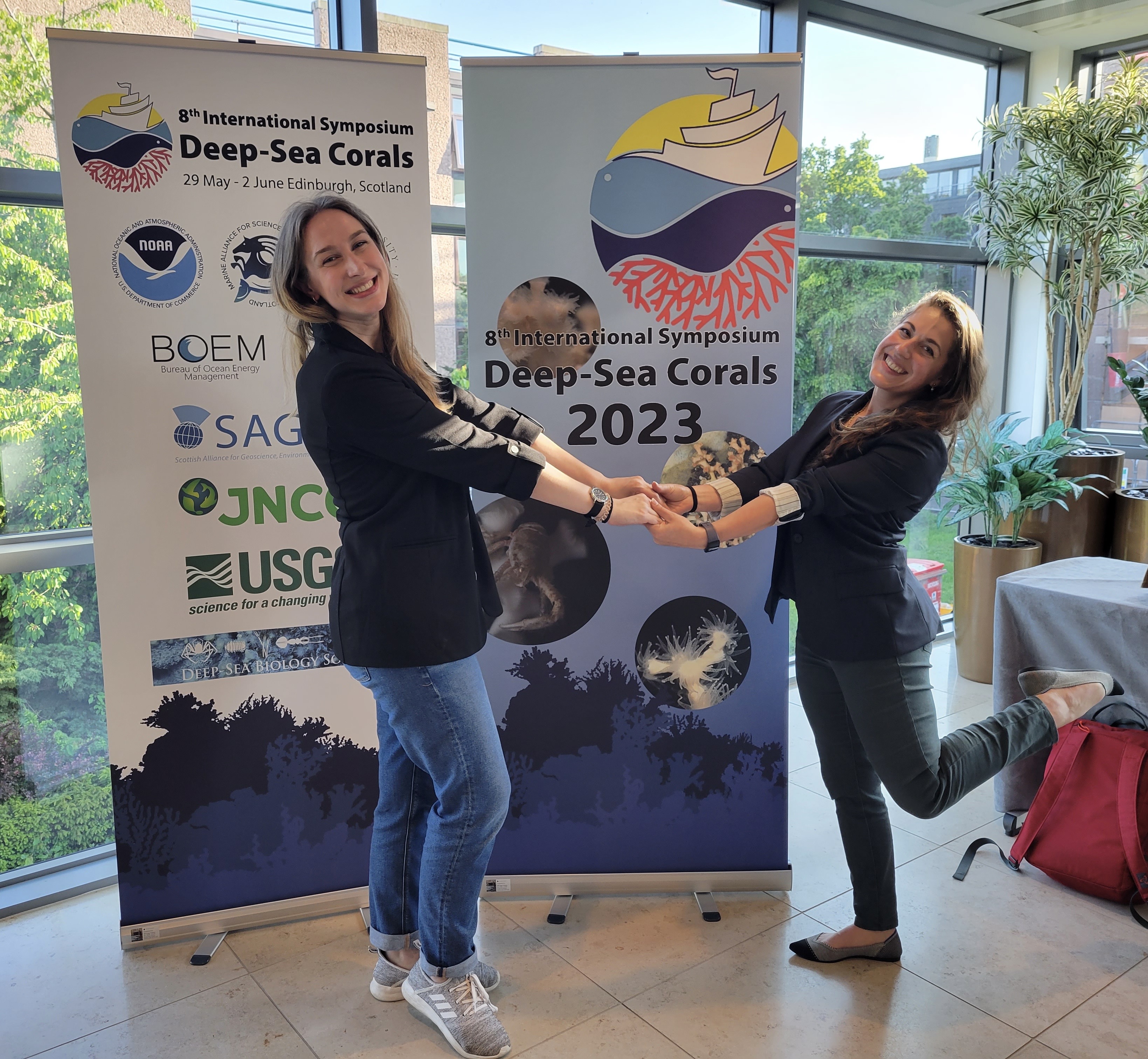 the 2023 International Symposium on Deep Sea Corals (photo to right)
the 2023 International Symposium on Deep Sea Corals (photo to right) - The Webb Lab welcomed new MS student Max Hampton in Fall 2022.
- Jenna O’del successfully defended her MS thesis – “Defining Evolutionary and Developmental Patterns of Lateral Line Scale Meristics Among Teleosts” in 2022.
- The Webb Lab welcomed a new MS student: Jenna O’del (BS Univ. New Hampshire) in Fall 2020.
- Dr. Webb received the 2020 Research Excellence Award from the College of the Environment and Life Sciences, University of Rhode Island.
- Dr. Webb received a 2020 Franklin Grant from the American Philosophical Society for her work on digital visualization, quantification and modeling of lateral line canal phenotypes
Funding for work in the Webb Lab has come from major grants from the National Science Foundation, two NSF Graduate Research Fellowships, the National Institute for Underwater Vehicle Technology (NIUVT), a Franklin Grant (American Philosophical Society), a Lerner Gray Grant (American Museum of Natural History, NYC), an Edward Raney Award (American Society of Ichthyologists and Herpetologists), a Society for Integrative and Comparative Biology FGST, a Laura and Arthur Colwin Summer Research Fellowship (Marine Biological Laboratory, Woods Hole), the George and Barbara Young Chair in Biology (URI), RI NSF EPSCoR, and the University of Rhode Island.
